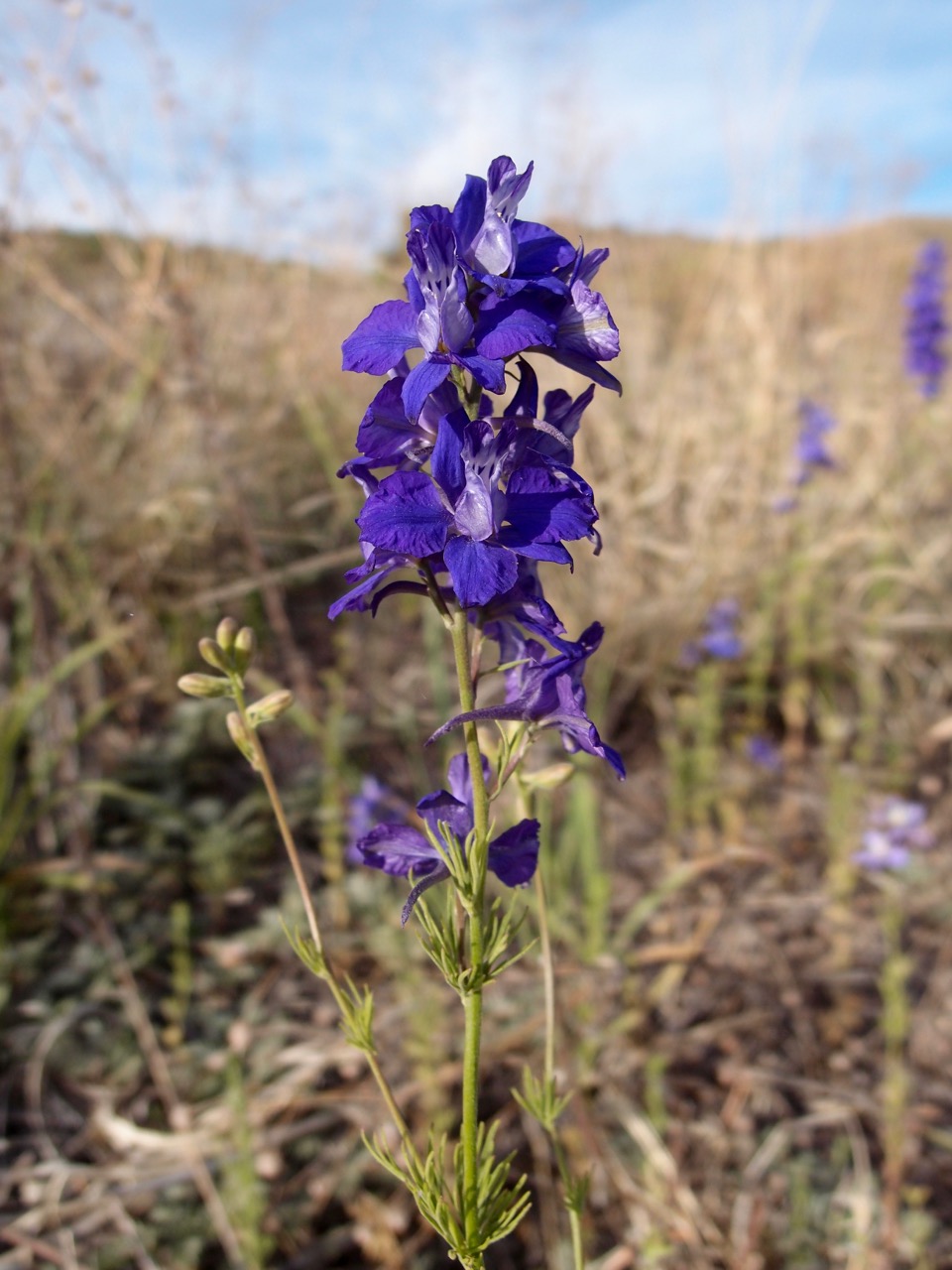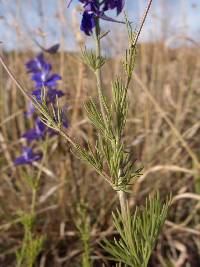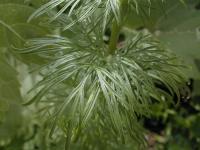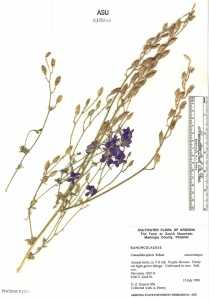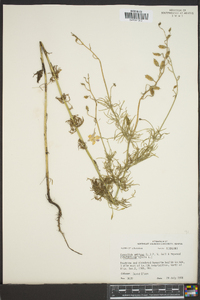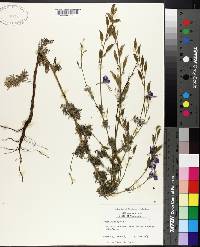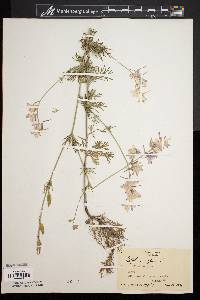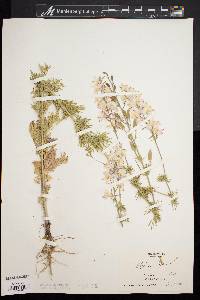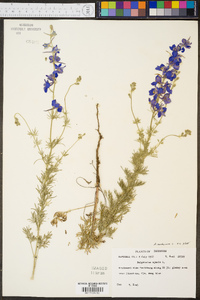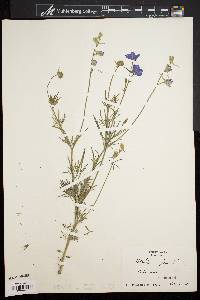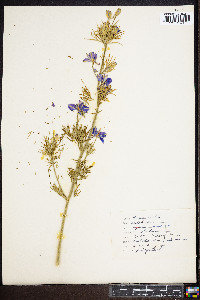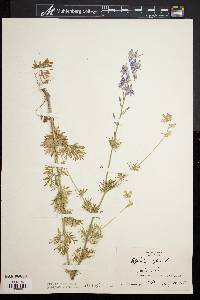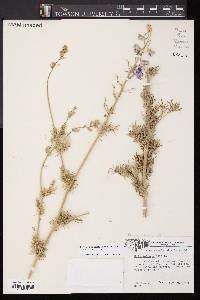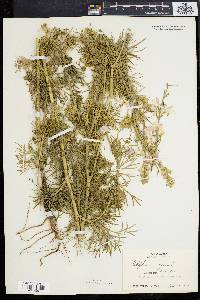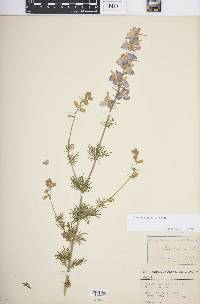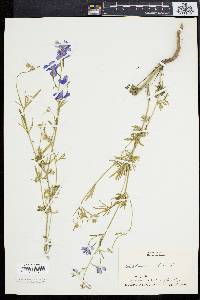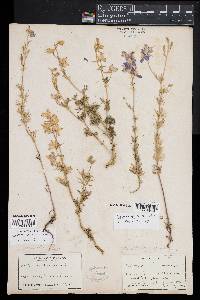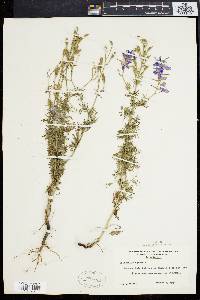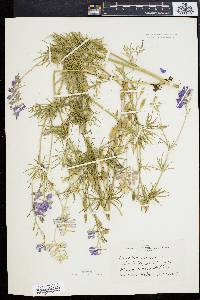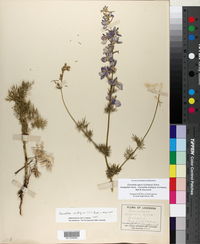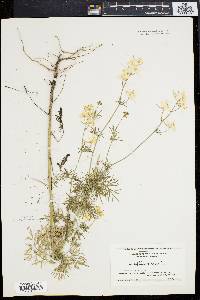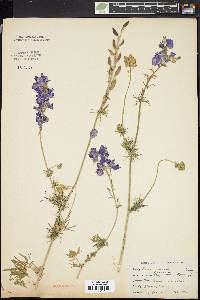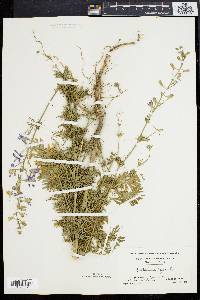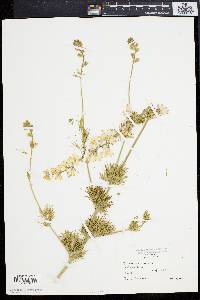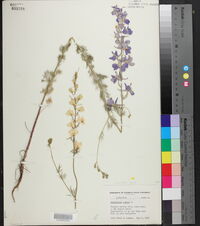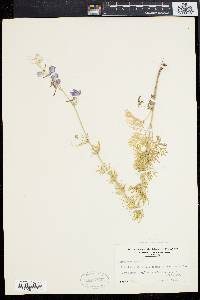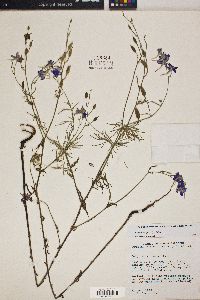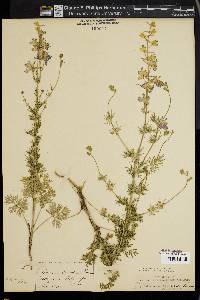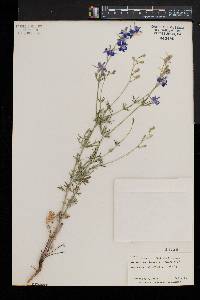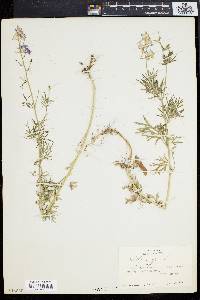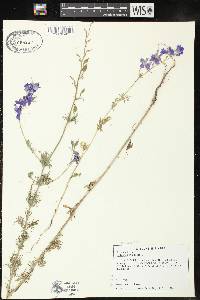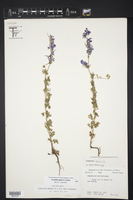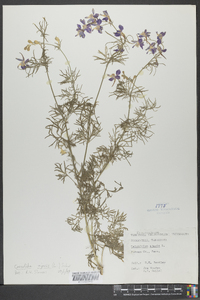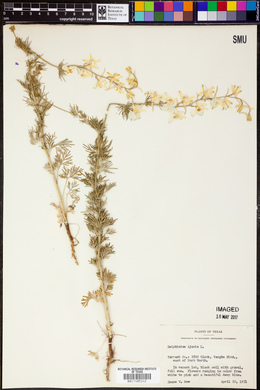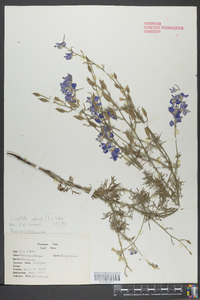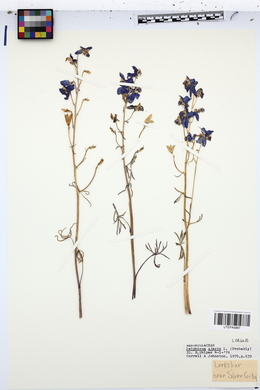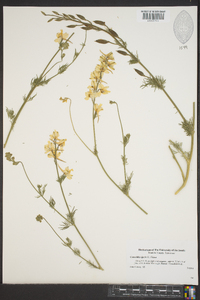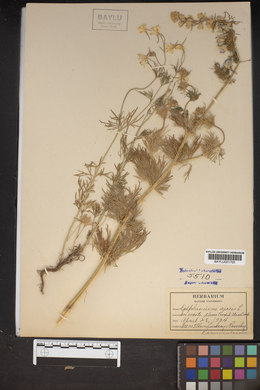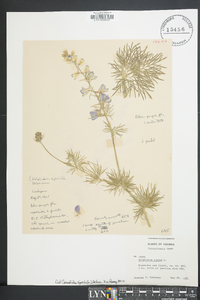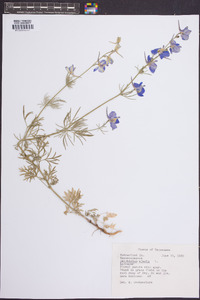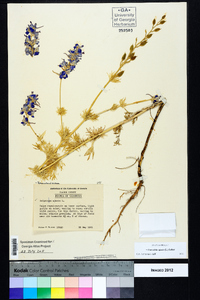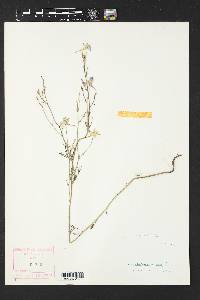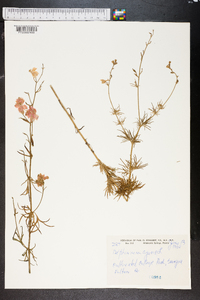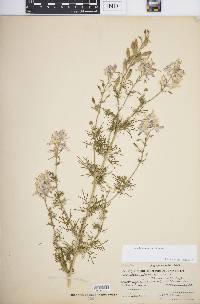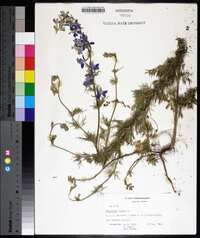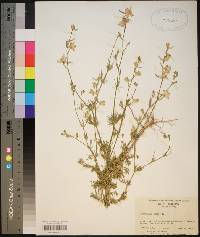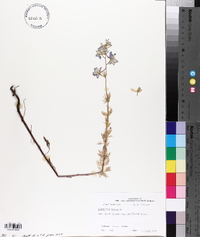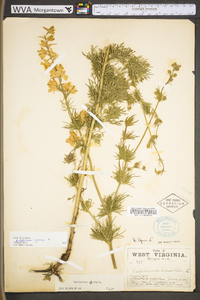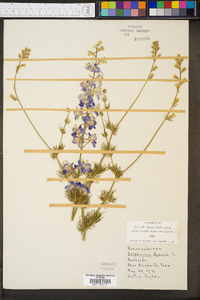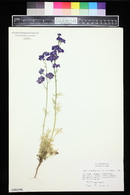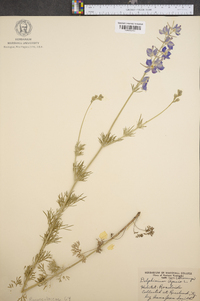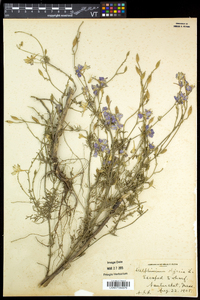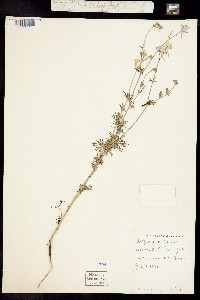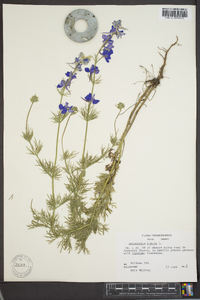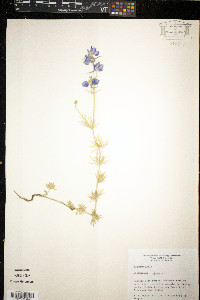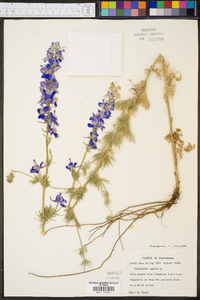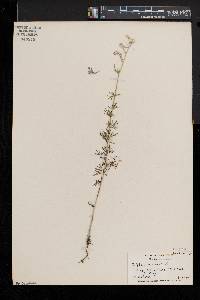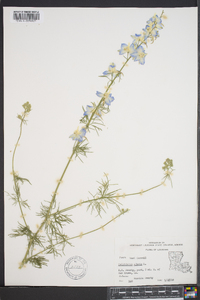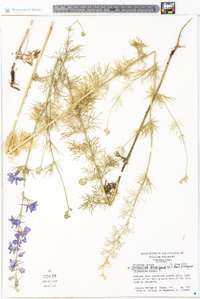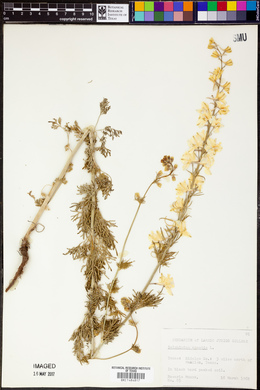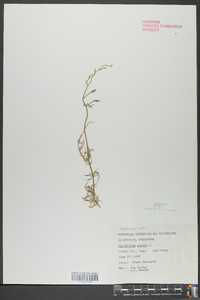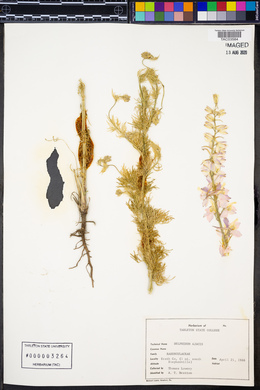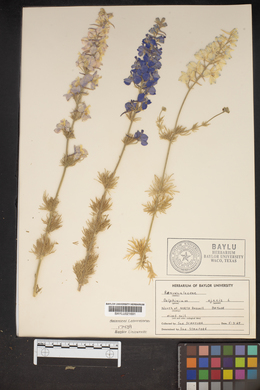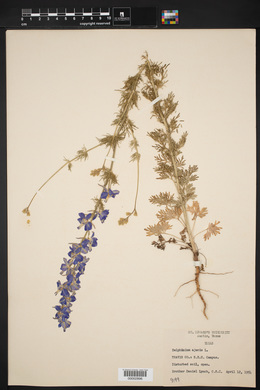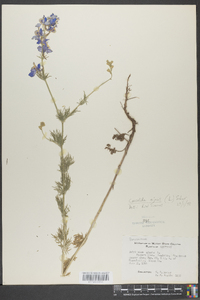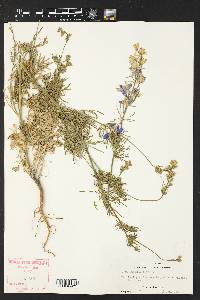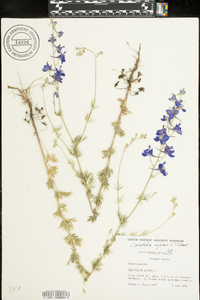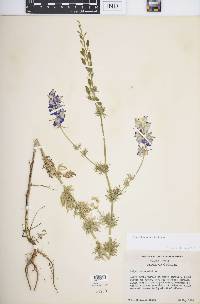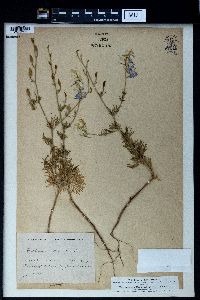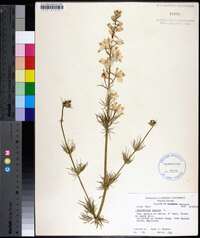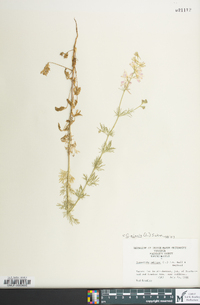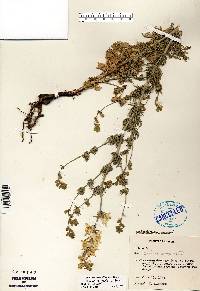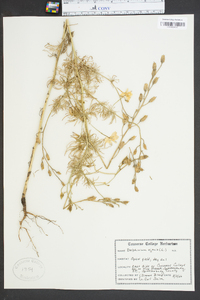
|
|
|
|
Family: Ranunculaceae
Doubtful Knight's-Spur, more...doubtful knight's spur, rocket larkspur
[Consolida ajacis (L.) Schur, moreConsolida ambigua (L.) P.W. Ball & Heywood, Delphinium ambiguum L., Delphinium nanum DC., Delphinium ornatum Bouché] |
Stems 3-8(-10) dm, glabrous to sparsely puberulent. Leaves 5-20 or more. Leaf blade orbiculate, 12-60-lobed or more, 1-5 cm wide, glabrous to puberulent, lobes less than 1.5 mm wide. Inflorescences 6-30(-75)-flowered, simple or with 3 or fewer branches; bracts (at least lowermost 2) with 5 or more lobes; pedicel ascending-spreading, 1-3(-5) cm, ± puberulent; bracteoles not touching sepals, 4-20mm from flower, ± linear, 1-3mm, ± puberulent. Flowers: sepals blue to purple, rarely pink or white, nearly glabrous, lower sepal 8-18 × 4-8mm, lateral sepals 8-18 × 6-14 mm, spur 12-20 mm; petals of same color as sepals or whiter, lateral lobes 3-6mm, terminal lobes 5-8 × 2-4 mm, sinus 0.2-1 mm. Follicles 12-25 mm, puberulent. Flowering summer. Waste places, old homesites, drainage ditches, roadsides, and railroads; 0-2000 m; introduced; B.C., Man., Ont.; Ala., Ariz., Ark., Calif., Conn., Del., D.C., Fla., Ga., Ill., Ind., Iowa, Kans., Ky., La., Md., Mass., Mich., Minn., Miss., Mo., Mont., Nebr., N.C., N.Dak., N.J., N.Y., Ohio, Okla., Pa., R.I., S.C., Tenn., Tex., Vt., Va., W.Va., Wis.; native to Europe and Africa; introduced in Asia and Australia. In many floras the names Consolida ambigua (Linnaeus) Ball & Heywood and Delphinium ambiguum Linnaeus have been misapplied to this taxon. Consolida ajacis has escaped and become more or less naturalized in many temperate and subtropical parts of the world. It is by far the most commonly encountered species of Consolida in North America. The Cherokee used Consolida ajacis medicinally in infusions to treat heart problems (D. E. Moerman 1986, as Delphinium ajacis ).
General: Introduced annual, 30-100 cm tall; stems erect, simple or branched, the branches ascending, glabrous to sparsely puberulent; taproot slender. Leaves: Cauline, alternate, palmately finely dissected, 1-5 cm wide, with 12-60 linear to filiform segments, these less than 1.5 cm wide, glabrous to puberulent; lower cauline blades petiolate, upper cauline blades sessile. Flowers: Inflorescence a compound cyme of 7-20 flowers, axillary; flowers unisexual (the plants dioecious), radial; sepals wide-spreading, obovate to oblanceolate, 6-10 mm long, white to cream; petals absent; staminodes absent between stamens and sepals; flowers May-September. Fruits: Follicle, 12-25 mm long, pubescent; seeds several. Ecology: Disturbed habitats, roadsides, railroads, ditches, old homesites; 1400-2600 m (4500-8500 ft); Coconino, Gila, Maricopa, and Yavapai counties; widely distributed throughout North America. Notes: This plant species can easily be mistaken for a Delphinium due to its defined sepal spur and divided leaves, but Consolida is an annual with a single pistil and 2 fused petals, whereas Delphinium is a perennial with 3-5 pistils and 4 distinct petals. Editor: Springer et al. 2008 Branching annual, 3-7 dm; lvs dissected into narrowly linear segments; fls 2-4 cm wide, variously blue, violet, pink, or white, in an elongate raceme; pet 2, united, with a single spur; ovary 1, densely hairy; follicle hairy, mostly 12-18 mm (including the style). Native of Europe, occasionally escaped from cult. Summer. (D. ajacis, misapplied; Consolida a.) Gleason, Henry A. & Cronquist, Arthur J. 1991. Manual of vascular plants of northeastern United States and adjacent Canada. lxxv + 910 pp. ©The New York Botanical Garden. All rights reserved. Used by permission. From Flora of Indiana (1940) by Charles C. Deam Somewhat frequent in fallow fields and open woodland near the Ohio River in the southeastern part of the state and probably very local elsewhere. Where it is common, I have seen blue, pink, and white forms of it in the same colony. |
This project was made possible in part by the Institute of Museum and Library Services [MG-70-19-0057-19].
Powered by Symbiota

